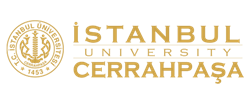Objective: The aim of this study was to determine a process for finding and selecting human resources in the hospitals that provide health tourism services in Istanbul and identifying the problems encountered in this process.
Materials and Methods: This descriptive cross-sectional research was conducted from March 2016 to May 2017 in 8 hospital officials that provide health tourism services in Istanbul. All these hospitals had Joint Commission International (JC)I accreditation and accepted our request for an interview. The research data were collected by 4 faculty members teaching health tourism. The data were prepared in line with the literature and gathered with a face-to-face interview form prepared according to expert opinions. As this was a qualitative research, the answers given to the questions were classified while analyzing the data. The similar responses were evaluated in a single group and different responses were evaluated individually.
Results: Of the interviewed officials, 2 were HR managers, 3 were HR specialists, and 3 were HR officers. The age range of the participants was between 25–40 years and the average age was 30 years. The managers’ HR experience ranged from 1.5 to 7 years, and 3 of them had undergone training in health management. A total of 7 hospitals had a unit related to health tourism. Two officials who had refrained from mentioning the exact number of patients availing health tourism stated that 30–40% of the total number of patients came from one hospital and 250 patients came from another hospital. All hospitals, except one, provided training in health tourism, and job analysis was performed in 7 hospitals. In one hospital, HR planning was carried out by the quality manager, in one by senior management, and in 6 hospitals by the HR department. Six hospitals stated that they had difficulty in finding nurses who were experienced, especially in certain areas (endoscopy, eye, and neonatal intensive care). In all hospitals, both patient satisfaction and staff satisfaction were measured. There were no problems between the hospital staff and foreign patients in 6 hospitals, one hospital had foreign language problems, and one hospital had problems due to different food cultures of patients from Central Asian and Arabic countries. Regarding the impact of health tourism on staff recruitment, 7 hospitals stated that it led to the staff opening up on receiving knowledge about foreign languages, experiences, and different cultures. The international patient units within 6 hospitals were in contact with insurance companies, consultancies, and health tourism companies. A hospital could only reach patients if it had its own international patient unit.
Conclusion: In this study, it was found that the HR departments of hospitals providing health tourism services, have to recruit staff who speak foreign languages, are open to different cultures, have a good general profile. They tend to face problems in finding professionalized nurses especially in certain areas and have tried to solve the communication problems between patients and health workers by employing interpreters.
Cite this article as: Çamlıdere A, Söyük S. Finding and Selecting Human Resources in Hospitals Providing Health Tourism Services in Istanbul and the Problems Encountered in this Process. Journal of Health Science and Profession 2019; 6(3): 527-33.


.jpg)


